Politics
Allegations of ‘Saffronization’ Raise Concerns About Indian Armed Forces’ Neutrality
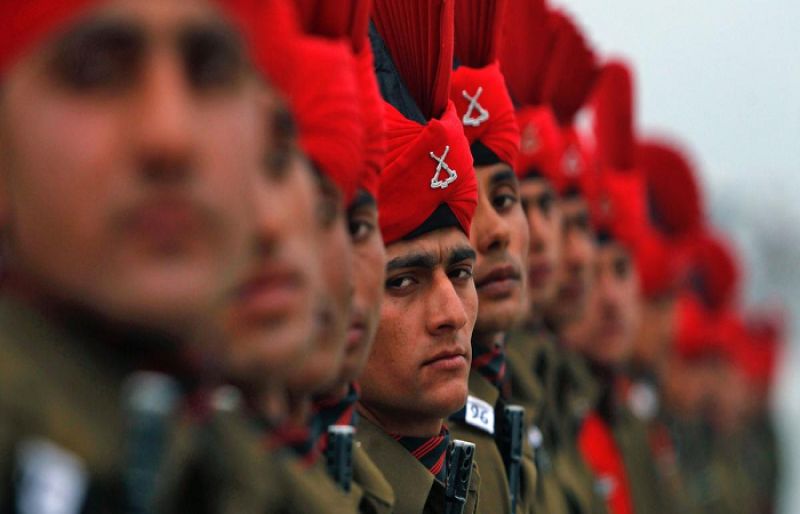
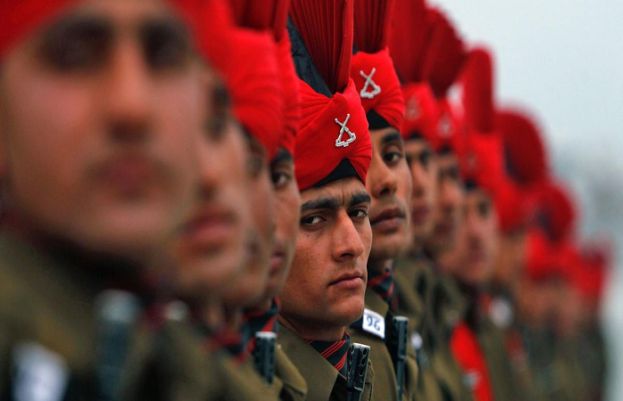
Reports indicate that the Indian Armed Forces (IAF, Army, and other branches) have seen increasing politicization and religious influence, raising concerns about the military’s neutrality and secular character.
Analysts and human rights organizations highlight the growing “saffronization” of the forces under Prime Minister Narendra Modi’s administration, linking military actions, symbols, and recruitment practices to Hindu nationalist agendas.
Religious Symbolism in Military Spaces
In January 2025, the Army Chief’s lounge in South Block, New Delhi, replaced a historic 1971 war painting with “Karam Kshetra”, depicting Hindu mythological figures alongside modern military assets.
Similarly, in December 2024, the Fire and Fury Corps unveiled a statue of 17th-century Hindu king Shivaji near Pangong Tso in Ladakh, accompanied by a saffron flag, signaling the assertion of Hindu identity in a sensitive strategic area.
Religious Rituals and Political Statements
Senior military officials, including the Army Chief, have participated publicly in Hindu rituals. On National Unity Day 2025, the Army Chief received a tilak and garland while in uniform.
Other visits, such as the COAS’s May 2025 trip to Hindu spiritual leader Rambhadracharya’s ashram, where he received religious initiation, have raised concerns about blurred lines between institutional duty and religious allegiance.
Politicization of Military Operations
Military operations have increasingly adopted Hindu religious names, such as “Sindoor” and “Mahadev”, reflecting ideological branding.
Statements by senior officials echoing BJP’s hardline rhetoric, including threats to Pakistan, suggest a shift toward aligning military discourse with nationalist political agendas.
Recruitment and Institutional Influence
The Agnipath scheme, initiated in 2022, and Sainik Schools are reportedly shaping future officers with influence from Hindu nationalist networks such as the RSS and affiliates of the Ram Mandir movement. Analysts warn this could embed ideological leanings in the military’s leadership pipeline.
Impact on Minority Officers
Reports indicate that minority officers, including Sikhs, Muslims, and Christians, face coercion to participate in Hindu rituals, professional insecurity, and social exclusion.
The case of Lt. Samuel Kamalesan, a Christian officer dismissed in 2025 for refusing to follow such practices, underscores growing concerns over institutional discrimination.
Human Rights Concerns
A 2025 Human Rights Watch report documents over 520 custodial deaths and extrajudicial killings in military custody, with some linked to ideological shifts and majoritarian policies.
Conclusion
Experts and analysts warn that these developments threaten the Indian Armed Forces’ secular, neutral character, cohesion, professionalism, and public legitimacy.
Critics argue that the military’s increasing alignment with Hindu nationalist politics risks turning it into a partisan force, compromising one of the country’s most critical institutions.
Politics
Afghanistan Eyes New Trade Paths as Pakistan Ties Worsen
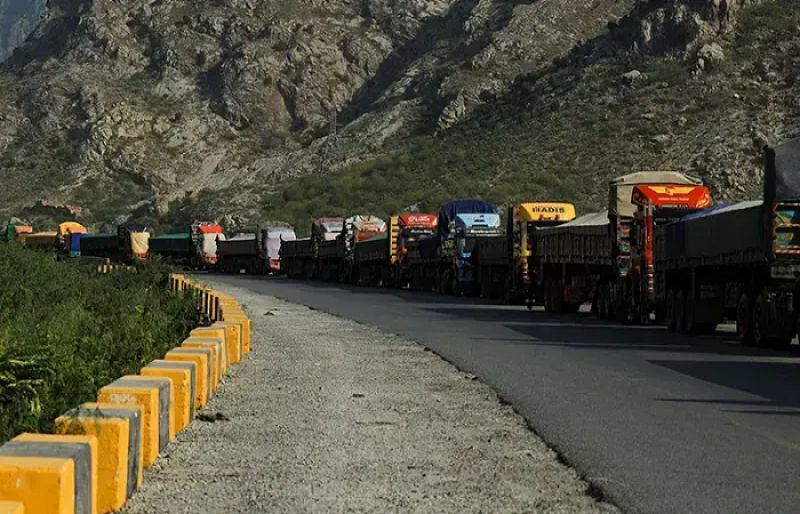

Afghanistan is racing to diversify its trade routes after a deadly border clash with Pakistan last month pushed ties to their lowest point in years, disrupting commerce and affecting communities on both sides of the frontier.
The South Asian neighbors have been embroiled in a tense dispute since the Taliban took control of Kabul in 2021, with Islamabad accusing Afghanistan of sheltering militants behind cross-border attacks—a claim the Taliban government denies.
Last week, Abdul Ghani Baradar, Afghanistan’s deputy prime minister for economic affairs, urged traders to “redirect their trade toward alternative routes instead of Pakistan.” He warned that Kabul would not intervene if businesses continued relying on Pakistani routes.
Pakistan has long been Afghanistan’s top trading partner, supplying rice, pharmaceuticals, and raw materials, while absorbing 45 percent of Afghan exports in 2024, according to the World Bank.
More than 70 percent of those exports, valued at $1.4 billion, consist of perishable agricultural goods such as figs, pistachios, grapes, and pomegranates.
The border closure on October 12, triggered by deadly cross-border fire, left dozens of Afghan trucks stranded with rotting produce.
Though a fragile truce followed, losses have already exceeded $100 million on both sides, impacting up to 25,000 border workers, according to the Pakistan Afghanistan Joint Chamber of Commerce and Industry (PAJCCI).
Facing potential future disruptions, the Taliban government is now exploring trade partnerships with Iran, Central Asia, and other markets to reduce dependence on Pakistan.
Pomegranates to Russia
Trade with Iran and Turkmenistan has jumped 60–70 percent since mid-October, said Mohammad Yousuf Amin, head of the Chamber of Commerce in Herat, in western Afghanistan.
Kabul also sent apples and pomegranates to Russia for the first time last month.
Russia is the only country to have officially recognised the Taliban administration.
Taliban leaders crave wider recognition and foreign investment, but sanctions on senior figures have made investors wary.
The vast market in India is a prime attraction. On Sunday, state-owned Ariana Afghan Airlines cut freight rates to the country of 1.4 billion people.
Two days later, Kabul sent its commerce and industry minister to New Delhi.
“Afghanistan has too many fruits and vegetables it cannot store because there are no refrigerated warehouses,” said Torek Farhadi, an economic analyst and former IMF adviser.
“Exporting is the only way,” he told AFP. And quickly, before the products spoil.
Kabul touts Iran’s Chabahar port as an alternative to Pakistan’s southern harbours, but Farhadi noted it is farther, costlier and hampered by US sanctions on Tehran.
Distraught
“It’s better for both countries to end this trade war… They need each other,” Farhadi said.
Afghanistan relies on Pakistan’s market of 240 million people and its sea access, while Islamabad wants Afghan transit to reach Central Asia for textile and energy trade.
Pakistan says the closure curbs militant infiltration, but its economy is also feeling the pinch.
In Peshawar, near the frontier, Afghan produce has all but vanished from markets.
Grapes cost four times more, and tomatoes have more than doubled to over 200 rupees (70 cents) a kilogram, an AFP correspondent found.
On Monday, the PAJCCI urged Islamabad to act, warning of mounting costs as shipping containers bound for Afghanistan and Central Asia remain stuck in Pakistan.
Each container is racking up $150–$200 in daily port charges, the group said, adding: “With thousands of containers stuck, the collective economic burden has become unbearable and continues to grow with each passing day.”
Truck driver Naeem Shah, 48, has been waiting at the Pakistani border town of Chaman with sugar and cooking oil bound for Afghanistan.
“I haven’t been paid for a month. No matter who I call, they say there is no money because the border is closed,” he told AFP. “If it doesn’t reopen, we will be distraught.”
Politics
Death toll from Indonesia’s Central Java landslides rises to 30
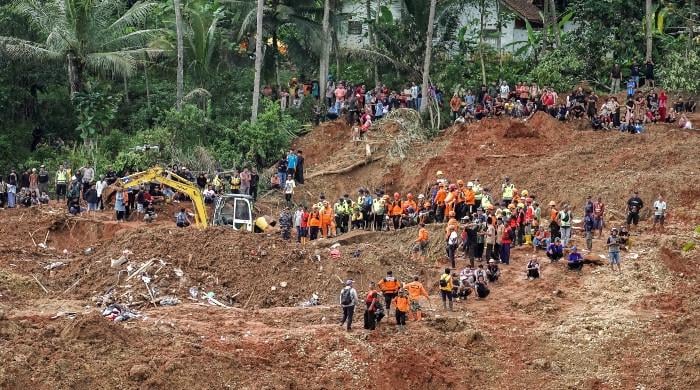

- Banjarnegara records ten dead, eighteen still unaccounted for.
- Cilacap landslides kill twenty, three people remain missing.
- Over 900 evacuated in Banjarnegara, nearly 400 in Cilacap.
JAKARTA: The death toll from landslides in two regions of Indonesia’s Central Java rose to 30 as rescue efforts continued, the country’s disaster mitigation agency said on Friday.
Some 21 people remain missing after landslides triggered by torrential rain struck the city of Cilacap last week and the Banjarnegara region over the weekend, the agency said.
Rescuers found 7 more bodies in Banjarnegara, the worst-affected area, on Thursday, bringing the death toll to 10 with 18 still missing, Abdul Muhari, the agency’s spokesperson said in a statement late on Thursday.
Dozens of houses were damaged, seven people injured, and more than 900 residents evacuated following the landslide there, Muhari said.
At least 700 rescuers including police and military personnel continue to look for the missing, using excavators to speed up the search, he added.
“We face several obstacles in the search, particularly with landslide ponds filled with debris and continuously flowing waters also risks new landslides due to rains,” Muhari said.
In Cilacap, rescuers found four more bodies this week bringing the death toll to 20 with three people still missing, Muhari said.
Authorities have extended search operations there until next week, and nearly 400 residents have been evacuated.
Indonesia’s wet season started in September and will continue until April, according to the weather agency, raising the risk of floods and extreme rainfall in many areas.
Climate change has impacted storm patterns, including the duration and intensity of the season, leading to heavier rainfall, flash flooding, and stronger wind gusts.
Flash floods and landslides in a remote area of Papua in Indonesia´s east killed at least 23 people, Muhari said.
— With additional input from AFP
Politics
Zelenskiy receives US plan to end war in Ukraine, will speak with Trump
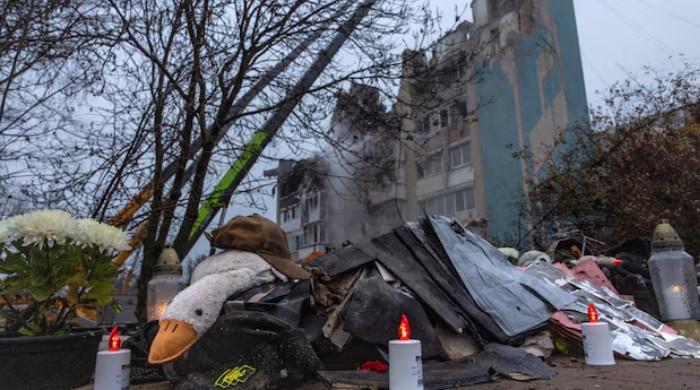
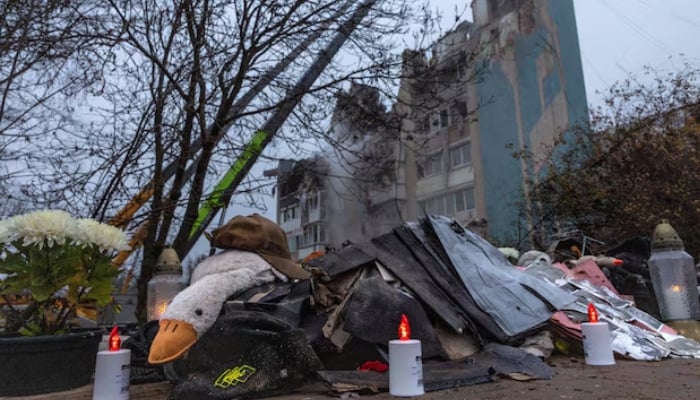
- US plan would reportedly require Kyiv to give up land.
- Kyiv would also have to accept curbs on military.
- France says peace cannot mean capitulation.
BRUSSELS/KYIV: President Volodymyr Zelenskiy has received the draft of a new US-backed plan to end Russia’s war in Ukraine and expects to have talks with President Donald Trump in the coming days, Zelenskiy’s office said on Thursday.
Two sources told Reuters on Wednesday that Washington had signalled to Zelenskiy that Kyiv must accept the US-drafted framework to end the nearly four-year-old war, which includes territorial concessions and curbs on Ukraine’s armed forces.
European countries pushed back on Thursday against the plan, which sources said would require Kyiv to give up more land and partially disarm, conditions long seen by Ukraine’s allies as tantamount to capitulation.
“We are ready now, as before, to work constructively with the American side, as well as with our partners in Europe and around the world, so that the outcome is peace,” Zelenskiy’s office said in a statement on Telegram.
Zelenskiy’s talks with Trump would include discussion of the “key points required to achieve peace”, it said.
“The President of Ukraine outlined the fundamental principles that matter to our people, and following today’s meeting, the parties agreed to work on the plan’s provisions in a way that would bring about a just end to the war.”
Trump and Zelenskiy clashed in front of television cameras in a disastrous meeting for the Ukrainian leader at the White House in March, but talks went more smoothly when he visited the White House this summer.
Video shows Russian soldiers in Pokrovsk
The acceleration in US diplomacy comes at an awkward time for Kyiv, with its troops on the back foot on the battlefield and Zelenskiy’s government undermined by a corruption scandal. Parliament fired two cabinet ministers on Wednesday.
Moscow played down any new US initiative.
“Consultations are not currently underway. There are contacts, of course, but there is no process that could be called consultations,” Kremlin spokesman Dmitry Peskov said.
He said Russia had nothing to add beyond the position President Vladimir Putin laid out at a summit with US President Donald Trump in August, adding that any peace deal must address the “root causes of the conflict”, a phrase Moscow has long used to refer to its demands.
With another winter approaching in the nearly four-year-old war, Russian troops occupy almost one-fifth of Ukraine and are poised to capture their first substantial city in nearly two years — the ruined eastern railway hub of Pokrovsk.
Video footage released by Russia’s defence ministry on Thursday showed its troops moving freely through the southern part of Pokrovsk, patrolling deserted streets lined with charred apartment blocks.
‘Peace cannot be capitulation,’ says France
European Union foreign ministers meeting in Brussels did not comment in detail about the US plan, which has not been made public, but indicated they would not accept demands for Kyiv to make punishing concessions.
“Ukrainians want peace – a just peace that respects everyone’s sovereignty, a durable peace that can’t be called into question by future aggression,” said French Foreign Minister Jean-Noel Barrot. “But peace cannot be a capitulation.”
German Foreign Minister Johann Wadephul said US special envoy Steve Witkoff had, during a phone call on Thursday, underlined “the importance of close coordination with Germany and our European partners” in talks to end the war.
The White House has not commented on the reported proposals. US Secretary of State Marco Rubio said on X that Washington would “continue to develop a list of potential ideas for ending this war based on input from both sides of this conflict”.
“…Achieving a durable peace will require both sides to agree to difficult but necessary concessions,” Rubio said.
A US Army delegation, led by Army Secretary Dan Driscoll and the Army’s Chief of Staff Randy George, was in Kyiv and expected to meet Zelenskiy late on Thursday.
They met Ukraine’s top military commander Oleksandr Syrskyi late on Wednesday. Syrskyi said the best way to secure a just peace was to defend Ukraine’s airspace, extend its ability to strike deep into Russia and stabilise the front line.
-

 Tech6 days ago
Tech6 days agoNew carbon capture method uses water and pressure to remove CO₂ from emissions at half current costs
-

 Politics1 week ago
Politics1 week agoBritish-Pakistani honoured for transforming UK halal meat industry
-

 Business6 days ago
Business6 days agoThese 9 Common Money Mistakes Are Eating Your Income
-

 Sports6 days ago
Sports6 days agoTexas A&M officer scolds South Carolina wide receiver after touchdown; department speaks out
-

 Business7 days ago
Business7 days agoWhat’s behind Rachel Reeves’s hokey cokey on income tax rises?
-

 Sports7 days ago
Sports7 days agoApple scrapping MLS Season Pass service in ’26
-

 Fashion7 days ago
Fashion7 days agoAfter London, Leeds and Newcastle, next stop Glasgow for busy Omnes
-

 Tech1 week ago
Tech1 week ago$25 Off Exclusive Blue Apron Coupon for November 2025






